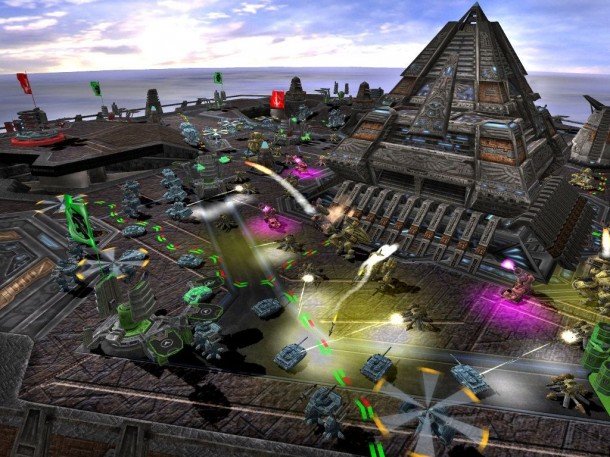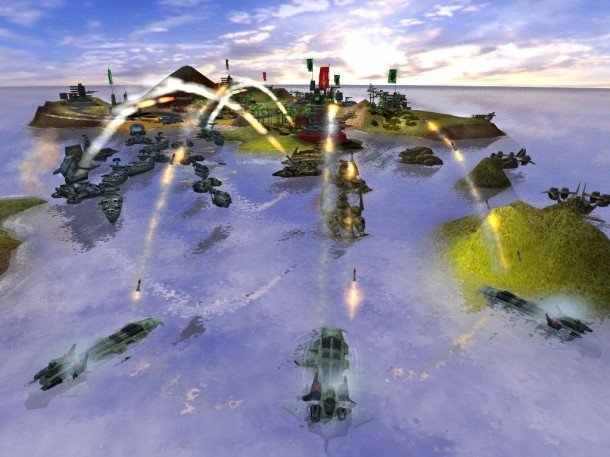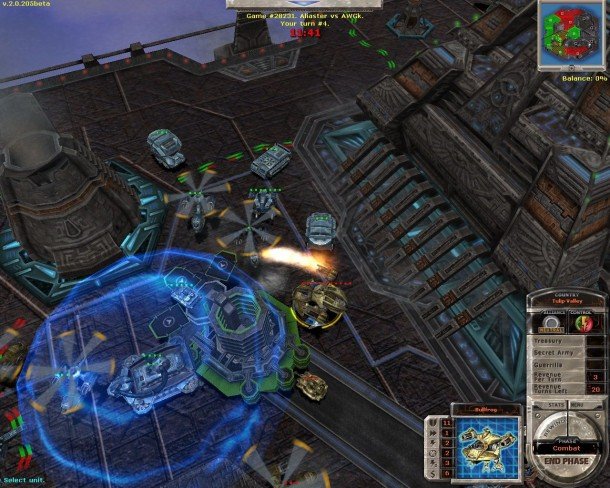The 12 year war - The rise of Wargaming.net

“That community who played the tabletop game, they pretty much switched to online big time,” says Kislyi. Players could pay a subscription fee to gain access to all 220 carefully modelled armies, and could set up international multiplayer games to play enthusiasts across the world. Improved server software meant they no longer needed to send out individual emails for every completed turn. Wargaming.net was small but profitable, and starting to amass some technical experience. The monthly subscription money provided enough support for the team to expand again. Soon, they were twelve strong, and eager to break into the mainstream.
It wasn't easy. Viktor remembers the dilemma the studio faced after the release of DBA. Hardcore military strategy had too small a following to keep the company growing, but they didn't want to abandon the complexity and depth of the turn-based strategy they loved. “Everybody likes the words 'mass market', but how do you do that?” asks Kislyi. “If you do it too mass market, appealing to everyone, there is no distinction for anyone. If you do it too niche, too hardcore, then just a small bunch of people play it.”
Wargaming.net's solution? Giant robots. Historical accuracy went out the window. Traditional units of war were replaced with tanks, battleships, giant walkers and futuristic artillery. The result was the 2003 turn-based strategy, Massive Assault. It combined the scale and hexagonal grids of Iron Age with a more marketable farfuture setting and offered the studio their first experience developing in a 3D engine. They never looked back.
Massive Assault gave the studio its first taste of critical acclaim and things got serious fast. Seasoned strategy publishers Matrix Games carried boxed copies in the US and Europe. Kislyi started attending events like E3 and GDC, and the studio started doing deals with advertisers and publishers. Massive Assault was Wargaming.net's introduction to the industry machine. They adapted quickly, learning tough lessons about the intricacies of publisher negotiations, contracts and advertising deals.

Armed with business experience, and a new-found sense of pragmatism, Wargaming.net turned their attention to a bigger problem. Audience interest in turn-based strategy games was dwindling. They followed up on Massive Assault with Massive Assault Network, Massive Assault: Domination and Massive Assault Network 2 before adapting Russian novel, Prisoners of Power into Galactic Assault in 2006, but the profits weren't as high as the company needed them to be.
At this stage, Wargaming.net consisted of around 35 members working out of a rented apartment in Minsk. They propped up long, dry development periods with the occasional publisher advance and contract work, developing accounting software and databases on the side to stay afloat. PC sales charts were full of big new titles like Medieval II: Total War and Company of Heroes. It was time for Wargaming. net to pull off their next big switch-up. They spent the next three years developing Order of War.
It would be Wargaming.net's first and last real-time strategy title.
The biggest gaming news, reviews and hardware deals
Keep up to date with the most important stories and the best deals, as picked by the PC Gamer team.
Viktor Kislyi still buzzes with excitement when he talks about Order of War. He refers back to the linoleum battlefield of his youth. “Those watermelon seeds in hundreds were always on my mind,” he says, “so I wanted to do things massive on the battlefield. In Order of War you see hundreds and up to thousands of infantry, tanks, planes moving across the battlefields.”

“We made literally a Normandy invasion scene to rival Steven Spielberg's opening scene from Saving Private Ryan, you know, for number of troops. And it definitely outnumbered Company of Heroes.”
Kislyi brings up Company of Heroes several times. The studio had changed tack and spent years developing a new series from scratch in an unfamiliar genre, only to crash up against the best World War II RTS ever made. Order of War offered battles on a scale that Company of Heroes couldn't match, but Relic's RTS had already had a couple of years to establish itself, and Wargaming.net struggled to persuade players to even take a look at their game.
“What we learned, and it was a bitter, bitter lesson, was community. Company of Heroes, without even probably knowing about our existence, flicked us on the nose.”
It's a sore point for Kislyi, but would turn out to be an important lesson for Wargaming.net. They realised that passionate players were a powerful asset. They could give insightful feedback on a game, they could defend it on forums, attack competitors and spread the word across the internet. They were testers, bug fixers, warriors and evangelists. Building a following during development would become a priority for Wargaming.net during work on World of Tanks.
Part of the UK team, Tom was with PC Gamer at the very beginning of the website's launch—first as a news writer, and then as online editor until his departure in 2020. His specialties are strategy games, action RPGs, hack ‘n slash games, digital card games… basically anything that he can fit on a hard drive. His final boss form is Deckard Cain.


